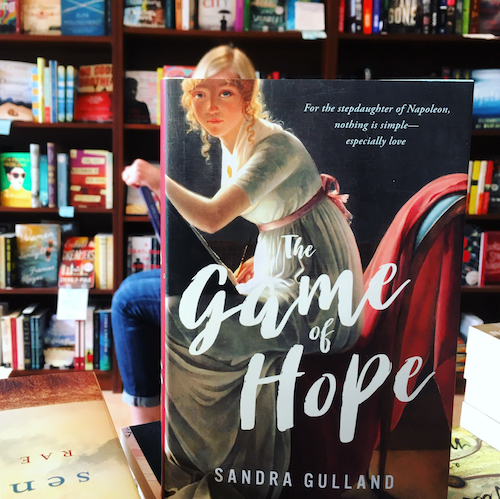
by Sandra Gulland | Jun 6, 2018 | Adventures of a Writing Life, The Game of Hope, Young Adult Literature |
I’ve been on the road, first launching and promoting The Game of Hope in Toronto, then a long drive home to unpack, regroup, and repack before heading to Montreal for the wonderful first (of many, we hope) Montreal YA fest.
It has been fantastic. At the Penguin launch in Toronto, an older woman leaned in to whisper confidentially, “You’re my favorite writer.” Such confessions are sweet. At an interview following (I don’t yet feel I should mention names), the interviewer told me that she loved The Game of Hope and went on to read every one of my other novels. That made me speechless.
That isn’t to say that everyone loves The Game of Hope — there have been some readers who do not — but overall, I’ve been very, very pleased.
The Game of Hope cards
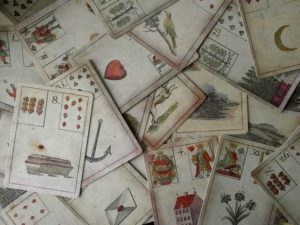
At the Penguin launch, I had each person who lined up to have their free book signed draw a card from a deck of fortune-telling cards of “The Game of Hope” (to keep as a bookmark), and read its meaning in a tiny guide. The expressions of recognition were wonderful to see: one young woman would be getting married, another would get a promotion. Both were quite pleased. Readers love it! Of course I did not include cards that might have a negative connotation in the deck.
It was a special treat to have my step-granddaughter, 11-year-old Ellie and her mother Cara present. Ellie is reading The Game of Hope and offered shyly to a group, “And it’s really good!”
The Montreal YA Fest: such a blast!

My experience at the Montreal YA Fest was amazing, but in an entirely different way. I only sold one book (!), but I met over twenty wonderful YA authors. I’m accustomed to writers of adult fiction; let me tell you, writers of YA fiction are a different breed altogether. They are loud and rambunctious, delightful! I couldn’t buy their books at the festival unfortunately — recent back problems have forced me to be very careful about luggage weight — but as soon as I got home I put in the orders, and they are starting to arrive in waves.
Two wonderful YA novels
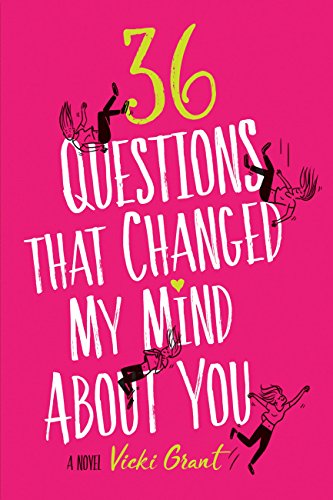
Already I’ve read one absolutely wonderful YA novel: 32 Questions that Changed My Mind About You by Vicki Grant. Don’t you just love a novel that compels you to stay up way too late? That makes you teary and full-hearted? This was such a one. Witty and real, I adored it.
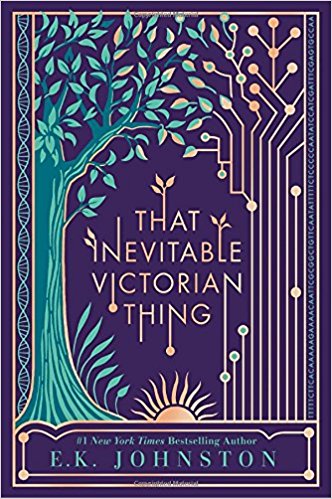
Now I’m reading E. K. Johnstons’s novel That Inevitable Victorian Thing, a futuristic novel set in the past. (Figure that one out.) I.e. Victorian corsets with technological sensors that ease up as needed. It’s delightful, and when I’m not reading it, I’m thinking about it and can’t wait to get back to it.
The wild and wonderful YA world
In general, this immersion into the wider world of YA has been like an explosion of creative imagination for me; in a YA novel, anything is possible.
The YA Fest was extremely well-organized, with many panels for participants to choose from, great food to eat, a fun photo booth (which I’m sorry I missed out on), as well as a button-making table. Here are mine:
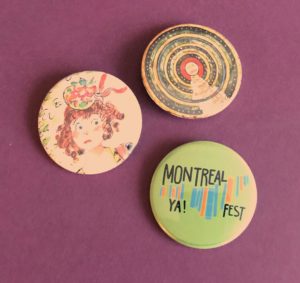
How cool is that? I especially love the dismayed look on the face of Little Bo Peep. Moi.

The photo at the top is from A Novel Spot bookstore in Entobicoke, Ontario. Don’t you just love it? Indie bookstores are so great. The mystery woman is Katie Middleton, the bookstore’s owner. Her hair matches perfectly!

by Sandra Gulland | May 21, 2018 | Adventures of a Writing Life, Audible Editions, Promotion, The Game of Hope, Young Adult Literature |
I’m writing this in Toronto, a long way from home. Tomorrow I have a full schedule of two interviews, a book store signing, and then, in the evening, a book launch of The Game of Hope.
I sent off the final corrections to The Game of Hope last October, and since then I’ve been researching and outlining my next YA novel about a young falconer in Elizabethan England. There are no raptors in The Game of Hope, so I thought it time to reacquaint myself fully with Hortense’s world before having to answer questions about it.
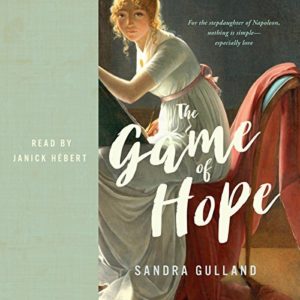
Fortunately, I was able to download the audio edition of The Game of Hope this morning, and on the long drive down to Toronto today, I listened to it. And was charmed! Say hey! I think it’s quite a good story, and the narration by Janick Hebert is simply delightful.
Canadians can now get the audio edition of The Game of Hope on Audible, Kobo, Google Play or on Overdrive through your public library. On June 23, it will be available in the US.
I sincerely recommend it!
Anyone else out there still warmed by the glow of Harry and Megan? I have been!
This is my favorite photo of the pair in the open carriage. (It was snapped by Yui Mok, a photographer based in the UK, as their carriage went under an overpass.)
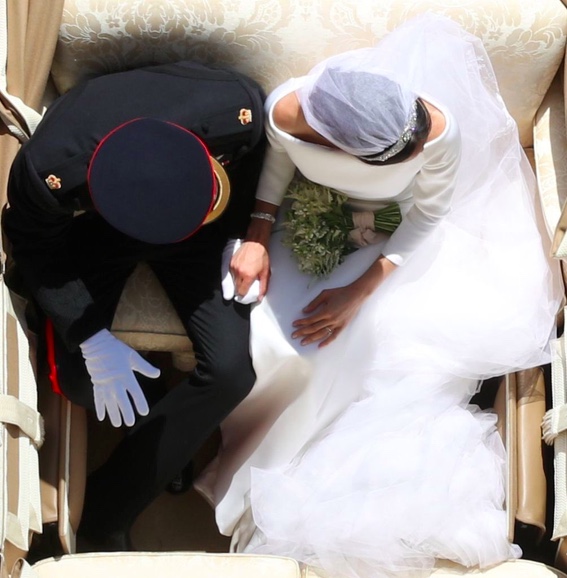
I initially intended to write this blog about an interesting article about writing historical fiction. However, “The Tourist, the Expat and the Native: A Traveler’s Approach to Crafting Historical Fiction,” by Mary Volmer deserves more than a passing reference. More on that anon…
For now, Hortense is about to meet the man she loves, and — frankly! — I’m curious to hear what happens!
Toronto photo by Sidra Saeed on Unsplash.
SaveSave
SaveSave
SaveSave

by Sandra Gulland | May 12, 2018 | Recommended Books, Movies, Podcasts, etc., Resources for Readers, Young Adult Literature |
The YA novels below are ones that gripped me in special ways … gripped me and wouldn’t let me go. They’ve stayed with me. I highly recommend them to Young Adults of all ages. :-)

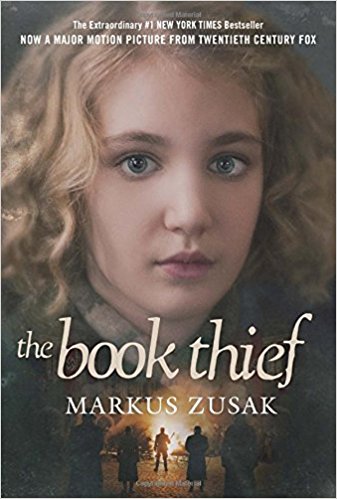
The Book Thief by Mark Zusak
The one book that opened our eyes to the wonder of YA.
Will we ever forget the haunting voice of Death? It’s time for me to reread this novel.

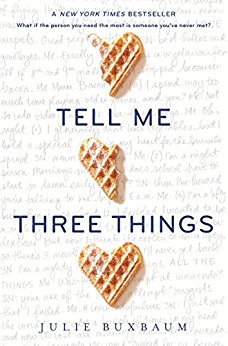
Tell Me Three Things by Julie Buxbaum
Buxbaum writes with wit and heart — and there is no better combination. This book woke me from a no-reading stupor. Some books are morning books, some books are nighttime books, and others become go-everywhere day-and-night books, just because you can’t wait to jump back into the story at any opportunity.
This, for me, was a go-everywhere book.

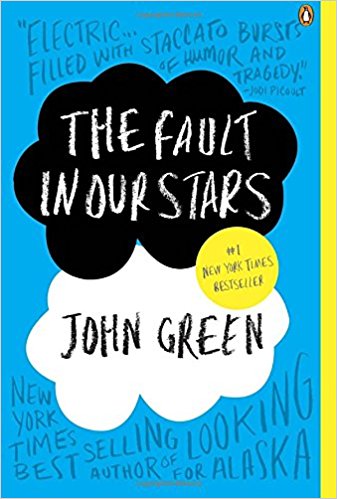
The Fault in Our Stars by John Green
Tremendously moving, but never without humour.

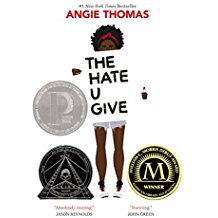
The Hate U Give by Angie Thomas
This novel has gotten a lot of attention, and for good reason. It opens our eyes to the realities of violent racism, but not without heart. No one is free of guilt.
(Hint: the audible edition is outstanding.)

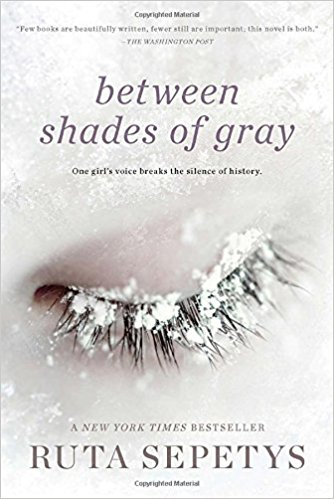
Between Shades of Grey by Ruta Sepetys
(Not, this is not the Shades of Grey you’re thinking.)
This many-awards winning novel by Ruta Sepetys is a very realistic WWII story about the deportation of Lithuanians and the genocide of Baltic people. She decided to frame it as a YA because in interviewing the survivors, she discovered that as teenagers, they had had a stronger will to survive.
An amazing story.

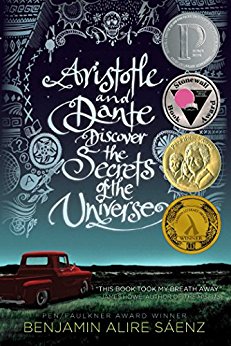
Aristotle and Dante Discover the Secrets of the Universe by Benjamin Alire Sáenz
A very honest, gentle and touching portrayal of a friendship turned to love between two boys.

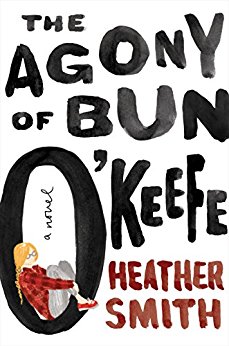
The Agony of Bun O’Keefe by Heather Smith
This novel is my newest enthusiasm. It kept me up far too late at night. I will never forget young Bun O’Keefe and the wonderful gang that become a her caring family.
Wit in abundance, but also gut-wrenching moments. Unforgettable.


36 Questions that Changed My Mind About You by Vicki Grant is another novel that kept me up far too late at night. Clever, charming, dramatic and satisfying. I absolutely adored it.
So there you have it!
Note that I’m not including the books that meant so much to me when I was a Young Adult: Nancy Drew, of course, in my pre-teen years, and then novels by the inimitable Judy Blume … from which I seemed to have leapt directly into the French existentialists.
I do vividly remember one YA novel, a story of young lovers in Europe during WWII. The girl is raped by the enemy, gets VD, and decides to get her revenge by sleeping with the enemy. Heavy-hitting, indeed. I remember it still (and would love to track it down).
Was there truly not much in-between in the 50s and 60s? I think a number of the books I’ve listed above would have meant a lot to me then.
 SaveSave
SaveSave
SaveSave
SaveSave
SaveSave
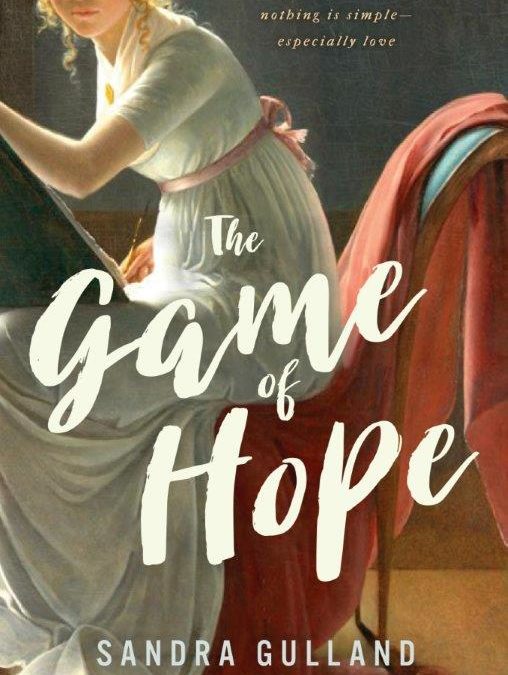
by Sandra Gulland | Apr 15, 2018 | Adventures of a Writing Life, On Plot, On Research, Publication, The Game of Hope, The Shadow Queen, The Writing Process, Young Adult Literature |
On November 2, 2011 (the day before my birthday), my agent, Jackie Kaiser, called to tell me that I’d been made a very tempting offer by Penguin to write two YA novels. One was to be about Josephine’s daughter Hortense, and the second was to be of my choosing.
My husband and I were in Mexico at the time, and two nights before I’d told him that I would never again contract to write a book “in advance.” I simply found it too stressful.
So the timing was a bit ironic. After Jackie’s call, I told my husband, “I’ve just been made an offer I can’t refuse.” Jackie had emailed me a photo of the box the offer had arrived in. Inside were the contract details and chocolates. How charming was that?

Even so, I thought about it carefully for two months. It takes me years (and years!) to write a novel, and I have to feel passionate about it. I have to fall in love with it. So I reread books about Hortense and covered our dining room table with plot points on index cards, considering. I needed to see if there was a story there, an enchanting story about Hortense’s teen years.
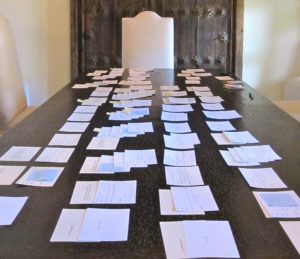
And there was. And it was one I very much wanted to write. By February 9, 2012, I had made up my mind. I would accept the offer. I would write a Young Adult novel about Hortense …
… although not immediately. I was on draft 6.1 of what I was then calling This Bright Darkness, soon to become The Shadow Queen. Plus, as I noted in that blog post of Feb. 9:
Somehow, I feel that I can do all of this all at once: finish This Bright Darkness, begin another adult novel set in the 17th century, write two YAs and a short novel for GoodReads, as well as launch my own e-book imprint.
(Reality has never been my strong suit.)
The Shadow Queen was published and my e-book imprint launched, but the “other adult novel set in the 17th century” had to be put on the back burner and the short novel for GoodReads was regretfully abandoned. Writing a novel requires full attention.
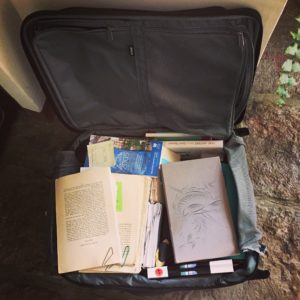
Soon I was carting research books on Hortense back and forth from Mexico to Canada.
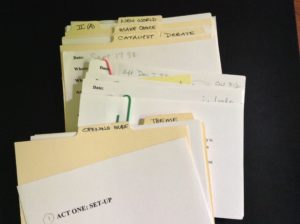
I organized my plot cards, shuffled and re-shuffled them.
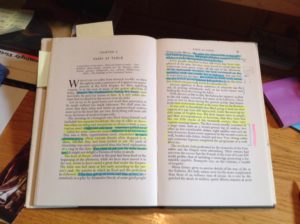
I researched like crazy.
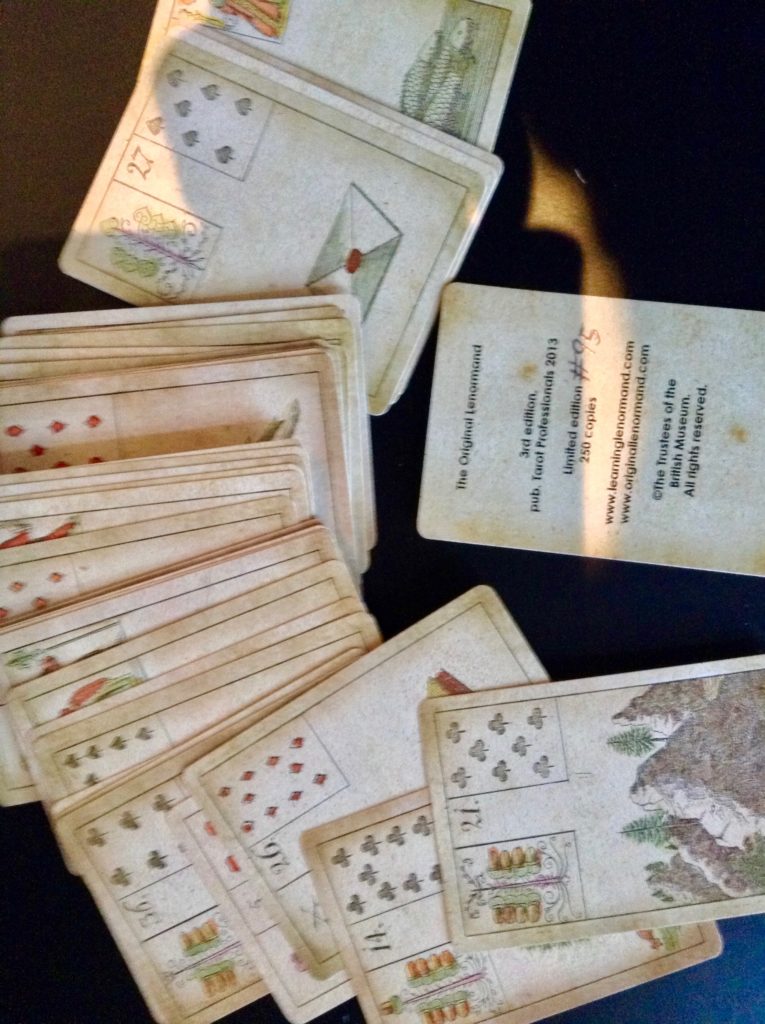
I bought a deck of The Game of Hope and began exploring. (Fun!)
On November 2, 2013, a full two years after receiving the offer from Penguin, I began the first draft.

This is draft 1.7 — that is, the 7th draft of the 1st draft.
Over the next four years, I made two research trips to France.
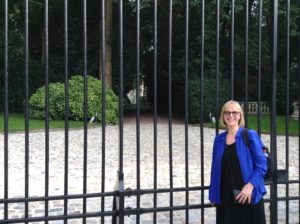
Here I am at the gates to Mortefontaine, the country estate of Napoleon’s brother Joseph.

This is a statue of Hortense at her home of exile in Arenenberg, Switzerland, overlooking Lake Constance, now a delightful museum devoted to her memory.

This is a photo of what remains of Madame Campan’s wonderful school in Saint-Germain-en-Laye.
Over time, I had the requisite stack of nine drafts it takes me to write a book.
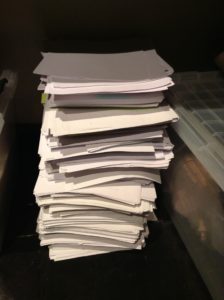
During the four years it took to write The Game of Hope, it went from being a novel told in the present tense to (at a fairly late stage) a novel told in the past tense. The title changed many, many times, and settled, finally, and happily, on The Game of Hope. The cover changed many times as well.

The Game of Hope, Hortense’s story, is now a book. For real. I’ve yet to hold it in my hands, but I will soon, in Toronto on May 1, the official Canadian publication day.
The amazement I feel about this long and magical process never grows old.
SaveSave
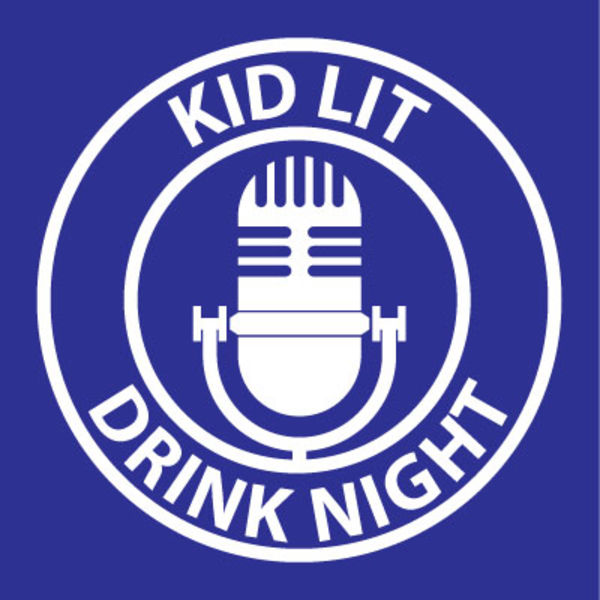
by Sandra Gulland | Apr 1, 2018 | Adventures of a Writing Life, Podcasts, Promotion, Resources for Writers, Young Adult Literature |
I’ve become very fond of a podcast about Young Adult lit called Kidlit Drink Night. They always make me laugh and I end up making lots of notes about books, movies and TV series to look into. They call themselves “Superfriends,” which is sweet. There is a lot of laughing. They share a love of YA Lit, and an often bizarre drink for the night, which is not always met with approval. :-) They end their once-a-month sessions with the question, “What are you crushing on?” I love that.
So: What am I crushing on right now? (Other than the Kidlit Drink Night podcast.)
So: what are you crushing on?
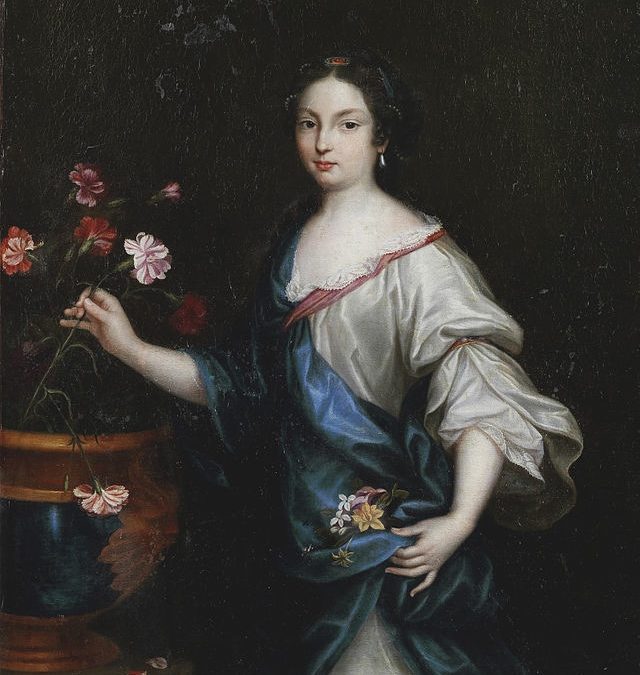
by Sandra Gulland | Mar 31, 2018 | Questions Readers Ask, Resources for Book Clubs, Resources for Readers, The Shadow Queen, The Sun Court Duet |
{Portrait of Claude des Oeillets}
The main character of my novel The Shadow Queen is Claude des Oeillets (dit Claudette), an impoverished young woman from the world of the theater. Socially scorned and denounced by the church, she lives on the fringes of society. As the daughter of a theatrical star, she exists in her mother’s shadow.
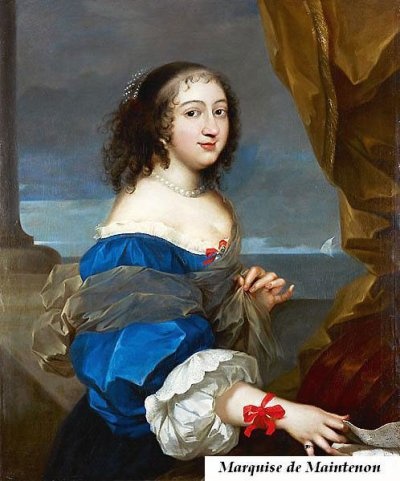
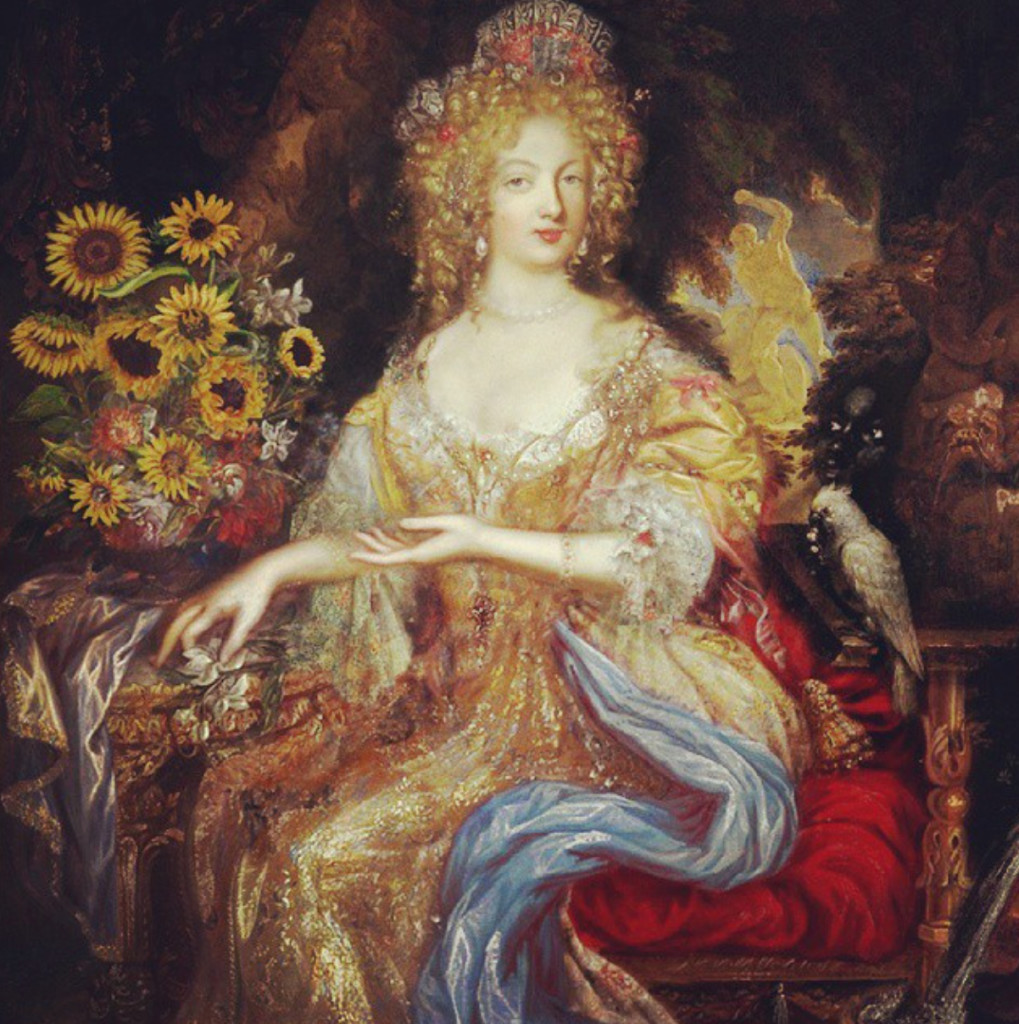
{Portraits of Madame de Montespan}
In contrast, Athénaïs, Madame de Montespan, lives at the heart of high society. She becomes Claudette’s obsessive passion, seeing in her a perfect life—a life without hunger and fear, a life of ease and beauty. Athénaïs’s life is everything Claudette’s is not.
While my other Sun Court novel, Mistress of the Sun, is set largely at Court, in both novels I am exploring the dynamic edge where court and ordinary life meet, with often explosive, unpredictable results. The Shadow Queen is about many things, but at its heart is the relationship between these two woman, Claudette and Athénaïs, who are close in age and share many of the same interests, yet are worlds apart. Claudette envies Athénaïs’s wealth; Athénaïs envies Claudette’s freedom, her life in the theater. Over time, they become dependent upon one-another. As Athénaïs’s devoted maid, Claudette is willing to do anything for her—up to a point.
It’s at that point that Claudette must step out of the shadows—and into the light of her own life.
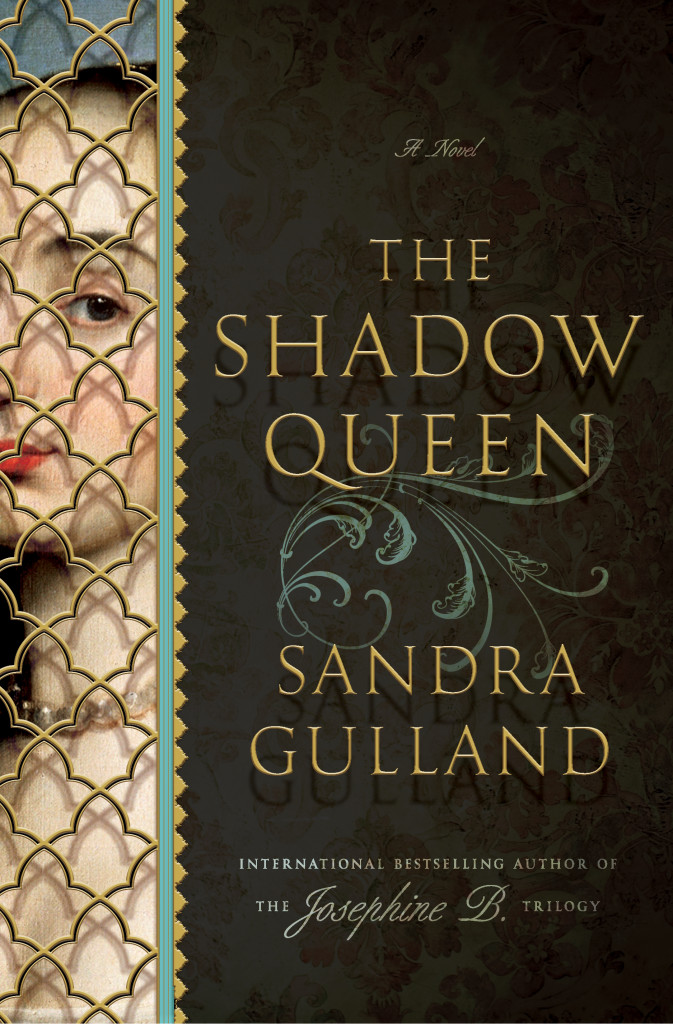
Over the five years I was writing this novel, I considered many titles. In the end, I felt that the title The Shadow Queen metaphorically captured the spirit of this story on a number of levels.
As part of the theatrical world, Claudette lives in the shadows of society. When she joins Athénaïs at court, she becomes the shadow of the official “Shadow Queen.” The story is very much about the ever-fascinating Athénaïs, but it is also about Claudette’s “dark” obsession with her and what Athénaïs represents, an obsession that leads Claudette into the shadow-side of that opulent world, a world of corruption and black magic, the shadow-side of want and hunger.
Who, then, is queen of shadows? Officially, of course, it is Athénaïs, but it could be others as well—Madame Voisin, for example, a woman who fulfills dark wishes, and even our “Good Knight” Claudette.SaveSave
SaveSave






![]()































